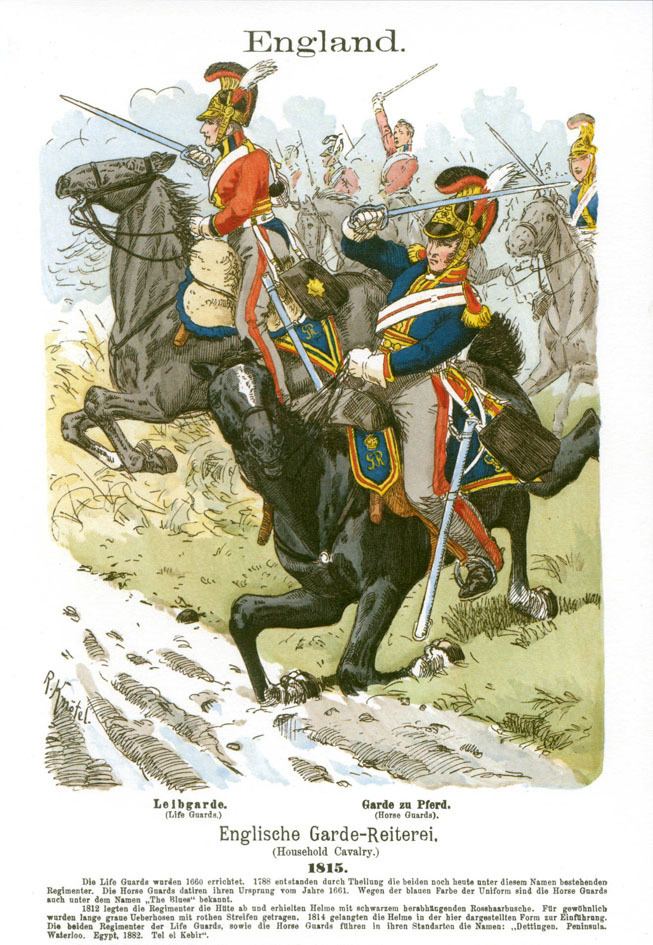Type Cavalry | ||
 | ||
Active 18151899–19021914–1919 Part of | ||
The 1st Cavalry Brigade was a brigade of the British Army. It served in the Napoleonic Wars (1st Household Cavalry Brigade), the Anglo-Egyptian War (1st (Heavy) Cavalry Brigade), the Boer War and in the First World War when it was assigned to the 1st Cavalry Division.
Contents
Prior to World War I the brigade was based at Aldershot in England and originally consisted of three cavalry regiments, and a Royal Engineers signal troop. After the declaration of war in August 1914, the brigade was deployed to the Western Front in France, where an artillery battery joined the brigade the following September and a Machine Gun Squadron in February 1916.
One of the brigade's early battles was the Action at Néry on 1 September 1914 when, acting alone, the brigade defeated the German 4th Cavalry Division. As a result of this action three men from the artillery battery – Captain Edward Bradbury, Sergeant-Major George Dorrell and Sergeant David Nelson – were awarded the Victoria Cross.
Napoleonic Wars
From June 1809, Wellington organized his cavalry into one, later two, cavalry divisions (1st and 2nd) for the Peninsular War. These performed a purely administrative, rather than tactical, role; the normal tactical headquarters were provided by brigades commanding two, later usually three, regiments. The cavalry brigades were named for the commanding officer, rather than numbered. For the Hundred Days Campaign, he numbered his British cavalry brigades in a single sequence, 1st to 7th. The 1st Cavalry Brigade consisted of:
As the majority of the brigade consisted of Household Cavalry regiments, it was known as the 1st (Household) Cavalry Brigade .
Anglo-Egyptian War
Boer War
The brigade was reformed for the Boer War. During the Battle of Paardeberg, the brigade commanded:
